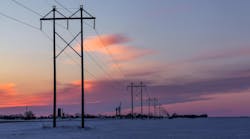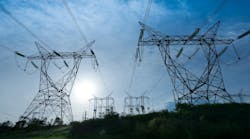The State Grid Corp. of China (SGCC), the country's biggest power supplier, said it would start building three more ultra-high voltage (UHV) power lines this year. The plan came after the company successfully put into operation the country's first UHV power line. The building of two other direct current UHV lines is still underway. The newly announced plan would bring the number of China's UHV lines to six.
UHV, defined as voltage of 1,000 kV or above alternating current, and 800 kV direct current, is designed to deliver large quantities of power over long distances with power losses less than traditional lines. China's SGCC started construction on such high-tech power line at the end of 2006 amid disputes over sophistication of such technologies and immense investment needed.
The 640-km alternating current line that linked the southeastern part of Shanxi Province, a coal-rich region, with Jingmen City of Hubei Province in central China, started commercial run on January 16 with a total investment of 5.9 billion yuan.
SGCC spokesman Lu Jian said there was an urgent need for such UHV technologies to deliver power in the vast nation, where energy resources are unevenly distributed. He said about 80 percent of the country's coal reserves were found in northern and western regions and 80 percent of hydropower in western regions, while more than 75 percent of energy demand is concentrated in the central and eastern regions.
The newly announced three alternating current lines would connect Huainan of Anhui Province and Xilingol of Inner Mongolia with energy-thirsty Shanghai, and the northern part of Shaanxi Province with Changsha in Hunan. The company did not give specifics on investment of these three lines, but said it would invest 83 billion yuan (12 billion U.S. dollars) in UHV power lines in 2009 and 2010.
The company also said two other UHV lines with a combined investment of 40 billion yuan are already underway. The two direct current lines would transmit hydropower in Sichuan Province to Shanghai and southern regions of Jiangsu Province.
The company said it planned to invest more than 100 billion yuan over the next three to four years on such UHV lines to make long-distance transmission more efficient.
The country's electricity demand may almost double to 7.4 trillion kilowatt-hours by 2020, and the installed generating capacity may also increase by a similar rate to 1.47 billion kilowatts, the company said. The company expected UHV capacity to reach 300 million kilowatts by 2020, with 78 million kilowatts dedicated to hydropower transmission.
